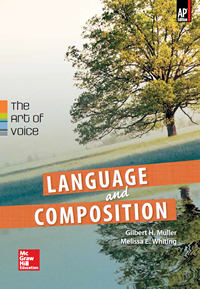
Language and Composition: The Art of Voice (Muller and Whiting)Chapter 2: The Writing ProcessChapter OverviewNo matter how much people rely on phone calls and brief text messages, no matter how influential videos on the Internet seem, you still have to know not just what good writing looks like but also how good writing is created. Active reading tools covered in the first chapter provide a foundation for embarking on writing assignments. All good writing starts by reading and otherwise gathering sources to inform and support your own writing. You might surf blogs or watch Internet videos, chat in person or online about a writing assignment, or e-mail the teacher with a pressing question about an essay you have read. But mostly, you should just make it your daily habit to read long stretches of text, articles, and books about a wide variety of topics—and keep a journal of reactions to what you have read. Once you’ve gathered sources to inform what you write, These three steps are generally referred to as the writing process. The steps can actually happen in any order: you might first find yourself rewording (editing) a source you have read and, before you know it, you find yourself drafting an essay of your own, and then you notice the plan that your draft is following, and you decide to refine that plan, and then you write another draft and edit that. As your word-processing talents and mastery of other digital options suggest, you often move back and forth within the different steps of the overall writing process as you generate the raw materials of composition and gradually refine them. We therefore acknowledge at the outset that everyone approaches the writing process somewhat differently. To illuminate this varied process, we will examine strategies employed by professional writers and several students, including student Jamie Taylor as she read and responded to the essay by Schlesinger presented in the first chapter. But first we require an overview of the writing process, starting with the origin and development of a writer’s ideas. Think of the process of writing as a craft. In Old English, the word craft signifies strength and power. By thinking of the writing process as a habit of mind involving planning, prewriting, writing, and revision, you can create effective essays and documents. In the world of 21st-century literacy, typified by blogs, social networking sites, and more, you also might be interacting with other students and communities, and thus writing collaboratively. |  |















